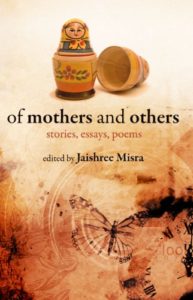“Selfish, Shallow, and Self-Absorbed: Sixteen Writers On The Decision Not To Have Kids”
When I think of the people among whom I grew up, it’s as I were looking back not to fifty but more than a hundred years, to an era before modern beliefs in the sacredness of childhood and children’s rights had emerged, before childhood had come to be seen as a time of innocence deserving protection, the part of every person’s life that should be carefree and full of fun.
Sigrid Nunez “The Most Important Thing”
Selfish, Shallow, and Self-Absorbed: Sixteen Writers On The Decision Not To Have Kids is a collection of essays edited by Meghan Daum. It is a fairly absorbing range of perspectives offered by a group of writers — predominantly women with the exception of Geoff Dyer and Tim Kreider— as to why they chose to remain childless. Everyone has their own set of reasons ranging from genuinely unable to bear children to a fierce sense of independence and their right to choose on how to live their life. Not a single writer included in this rather fabulous collection of essays feels guilty about the decision made/for them and in no way has it robbed them of any pleasure of having children of their own. Some of them confess that they love being the doting aunt/uncle and look forward to the time they spend with the youngsters in their circle of family and friends.
In every essay there is a gem or two worth sharing. Most often than not there is a searing perspective these essayists offer ranging from the fear and inability to raising kids well, sufficient financial security, loss of personal freedom, whether they will have the compassion and patience to nurture a child, no respite from the daily rigour of raising a family, the challenges of trying to have it all — family and profession or the inability to offer stability of putting down one’s roots in a place. It is quite fascinating to read how childless adults perceive parenting and family structures.
Here is an extract from an essay by Laura Kipnis that neatly encapsulates the history of motherhood and the stress of modern childhood.
I don’t believe in maternal instincts because as anyone who’s perused the literature on the subject knows, it’s an invented concept that arises at a particular point in history ( I’m speaking of Western history here) –circa the Industrial Revolution, just as the new industrial-era sexual division of labor was being negotiated, the one where men go to work and women stay home raising kids. ( Befoer that, pretty much everyone worked at home.) The new line was that such arrangements were handed down by nature. As family historians tell us, this is also when the romance of the child begins — ironically it was only when children’s actual economic value declined, because they were no longer necessary additions to the household labor force, that they became the priceless little treasures we know them as today. Once they started costing more to raise than they contributed to the household economy, there had to be some justification for having them, which is when the story that having children was a big emotionally fulfilling thing started taking hold.
It also took a decline in infant-mortality rates for mothers to start regarding their offspring with much affection. When infant deaths were high ( in England before 1800 mortality rates were 15 to 30 percent in the first year of life), maternal attachment understandably ran low. As historian Lawrence Stone pointed out, giving a newborn child the same name as a dead sibling was a common practice; in other words, children were barely regarded as distinct individuals. They were also typically sent to wet nurses following birth — so much for the mother-child bond — and when economic circumstances were dire, farmed out to foundling hospitals or workhouses ( “little more than licensed death camps,” said Stone). But then childhood as such really didn’t exist, or at least it wasn’t a recognizable concept, as historian Philippe Aries documented; this, too, is a social invention. Children were viewed as small adults’ apprenticed out to work at age five. It was only as families began getting smaller — birthrates declined steeply in the ninenteenth century — that the emotional value of each child increased. Which is where we find the origin point for most of our current ideas about maternal fulfillment.
All I’m saying is that what we’re calling biological instinct is a historical artifact — a culturally specific development, not a fact of nature. An invented instinct can feel entirely read (I’m sure it can feel profound), though before we get too sentimental, let’s not forget that human maternity has also had a fairly checkered history over the ages, including such maternal traditions as infanticide, child abandonment, cruelty, and abuse.
…the real reason I’m agains the romance about maternal instincts is that what gets lost amid this fealty to nature is that nature hasn’t been particularly kind to women, and I say we owe it no favors in return. If women have been “ensnared by nature” as Simone de Beauvoir ( no fan of maternity herself) put it, if it’s so far been our biological situation that we’re the ones stuck bearing the children, then there should be a lot more social recompense and reparations for this inequity than there are. The reason these have been slow in coming? Because women keep forgetting to demand them, so convinced are we that these social arrangements are the “natural” order of things. The willingness to call an inequitable situation “natural” puts us on the royal path to being society’s chumps.
Laura Kipnis “Maternal Instincts” ( p.33-35)
Selfish, Shallow, and Self-Absorbed is definitely an anthology worth possessing.
Meghan Daum ( edited) Selfish, Shallow, and Self-Absorbed: Sixteen Writers On The Decision Not To Have Kids Picador, New York, 2015. Pb. pp. 282 Rs 599
29 June 2017













